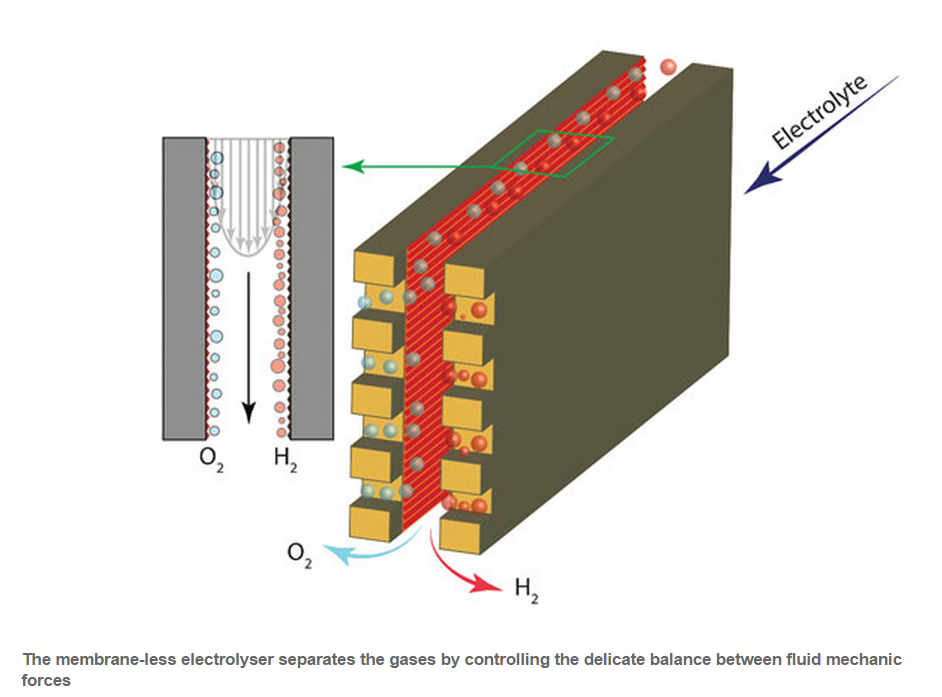A water splitting electrolyser typically contains an ion-conducting membrane which separates the electrodes and keeps the oxygen and hydrogen apart, preventing explosion. However, these membranes are expensive and thus the development of a membrane-less electrolyser is an exciting advance. Researchers at Swiss Federal Institute of Technology Lausanne, led by Demetri Psaltis, have developed such a device by exploiting the Segré–Silberberg effect. The oxygen and hydrogen are kept separate as the distance between the two electrodes is less than a few hundred micrometres and they do not mix because lift forces in the narrow passage push them towards the wall they evolved from.This is a microfluidic device that provides promising proof-of-concept and the group are now attempting to scale up.
Want to know more?
Read the full article in Chemistry World by Isobel Marr.
Or, take a look at the original article which is free to access untill 1st June 2015:
“A membrane-less electrolyzer for hydrogen production across the pH scale” by S. Mohammad H. Hashemi, Miguel A. Modestino and Demetri Psaltis, DOI:10.1039/C5EE00083A











